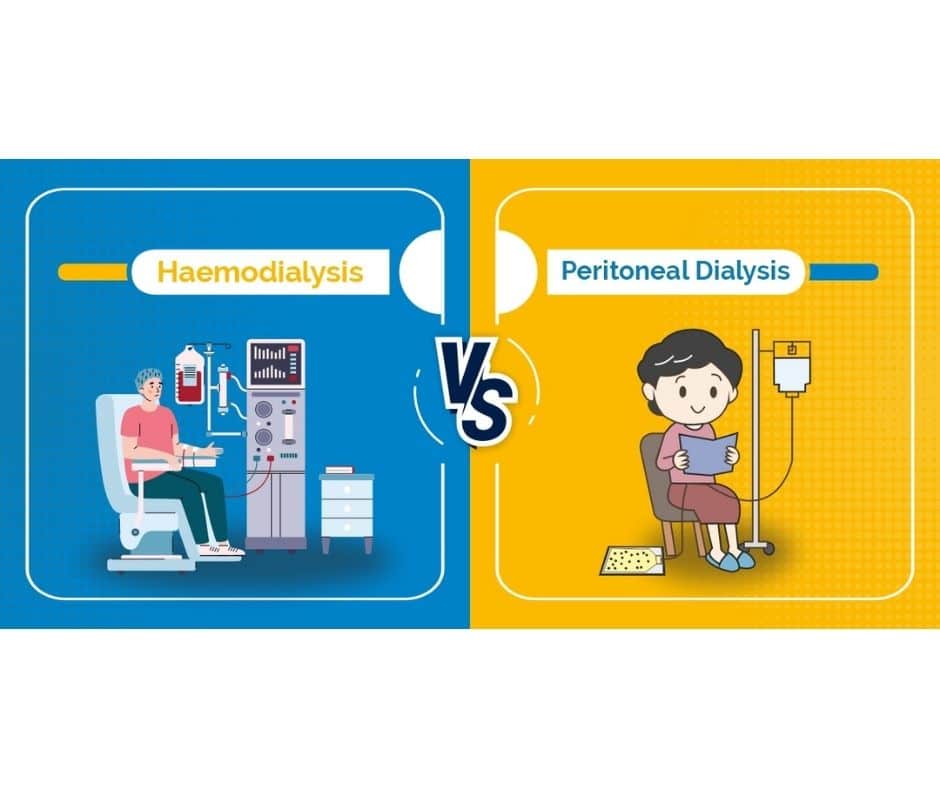Now a days kidney problems have become quite normal. Every now and then we used to hear about kidney failure of someone. When someone got damage his/her kidneys doctor advice him/her for the dialysis. There are two types of dialysis a patient can go for but due to lack of knowledge and understanding people get really confused to choose which dialysis they should go for.
Today in this article you will find some good information about dialysis that may help you to take a decision.
There are two types of dialysis:
Hemodialysis
It is a treatment to filter wastes and water from your blood, as your kidneys did when they were healthy. Hemodialysis helps control blood pressure and balance important minerals, such as potassium, sodium, and calcium, in your blood.
Peritoneal dialysis
It is a treatment for kidney failure that uses the lining of your abdomen, or belly, to filter your blood inside your body. Health care providers call this lining the peritoneum. A few weeks before you start peritoneal dialysis, a surgeon places a soft tube, called a catheter, in your belly.
Peritoneal dialysis (PD) is a procedure that can be used by people whose kidneys are no longer working effectively. It does not cure or treat the underlying kidney disease. It is intended to replace as many functions of the failing kidneys as possible. The procedure is performed at home and primarily works to remove excess fluid and waste products from the blood.
What is the difference between hemodialysis and peritoneal dialysis?
Hemodialysis is an ongoing dialysis (3 to 5 times a week) that cleans your blood, usually in a dialysis center. The hemodialysis access is in your arm. Peritoneal dialysis is ongoing dialysis (daily) that collects waste from the blood by washing the empty space in the abdomen (peritoneal cavity). It can be done from home.
Which is better hemodialysis or peritoneal dialysis?
If dialysis is recommended for you, you’ll often be able to choose whether to have haemodialysis or peritoneal dialysis. Both methods of dialysis are equally effective for most people, so it’s usually a case of personal preference.
Let share with you my personal experience.
My mother was diagnosed as her both kidneys failed and dialysis was the only option with us. Doctor explained us about Hemodialysis and Peritoneal dialysis. We choose Peritoneal dialysis because of these reasons:
- It can be performed at home after a training where as Hemodialysis can be perform only at hospital or dialysis centers
- Peritoneal dialysis is pain less
- Patient is free to do any work, eating or sleeping while the dialysis is going on.
- Peritoneal dialysis is time saver because patient is not bound to just be on the bed. In Hemodialysis patient is bound to be on bed for 5-6 hours.
Types of peritoneal dialysis
- Continuous Ambulatory Peritoneal Dialysis (CAPD)
This is also called as manual dialysis and has to be performed three times in a day. Morning, Afternoon and night. - Automated Peritoneal Dialysis (APD)
This dialysis will be performed with a machine which automates dialysis process and run for 10 hours in the night time only. It is very smooth and patient can sleep after initiating dialysis. They can eat, walk or do any other routine activities along with dialysis.
So my personal choice is the Peritoneal dialysis over haemodialysis.
Peritoneal dialysis is costly than haemodialysis.
What are the side effects of PD dialysis?
Side effects of peritoneal dialysis:
- abdominal pain
- a high temperature
- feeling and being sick
- experiencing chills
- the used dialysis fluid becoming cloudy
Average survival on peritoneal dialysis is 5-10 years but patients can survive up to 15 or 20 or even 30 years too if they follow the proper instructions and take good care of themselves along with a healthy diet.
I hope you have got some good information to choose between hemodialysis and peritoneal dialysis. If you have any questions about it you can reach out to me at tanujchhabra07@gmail.com or post comments below.










